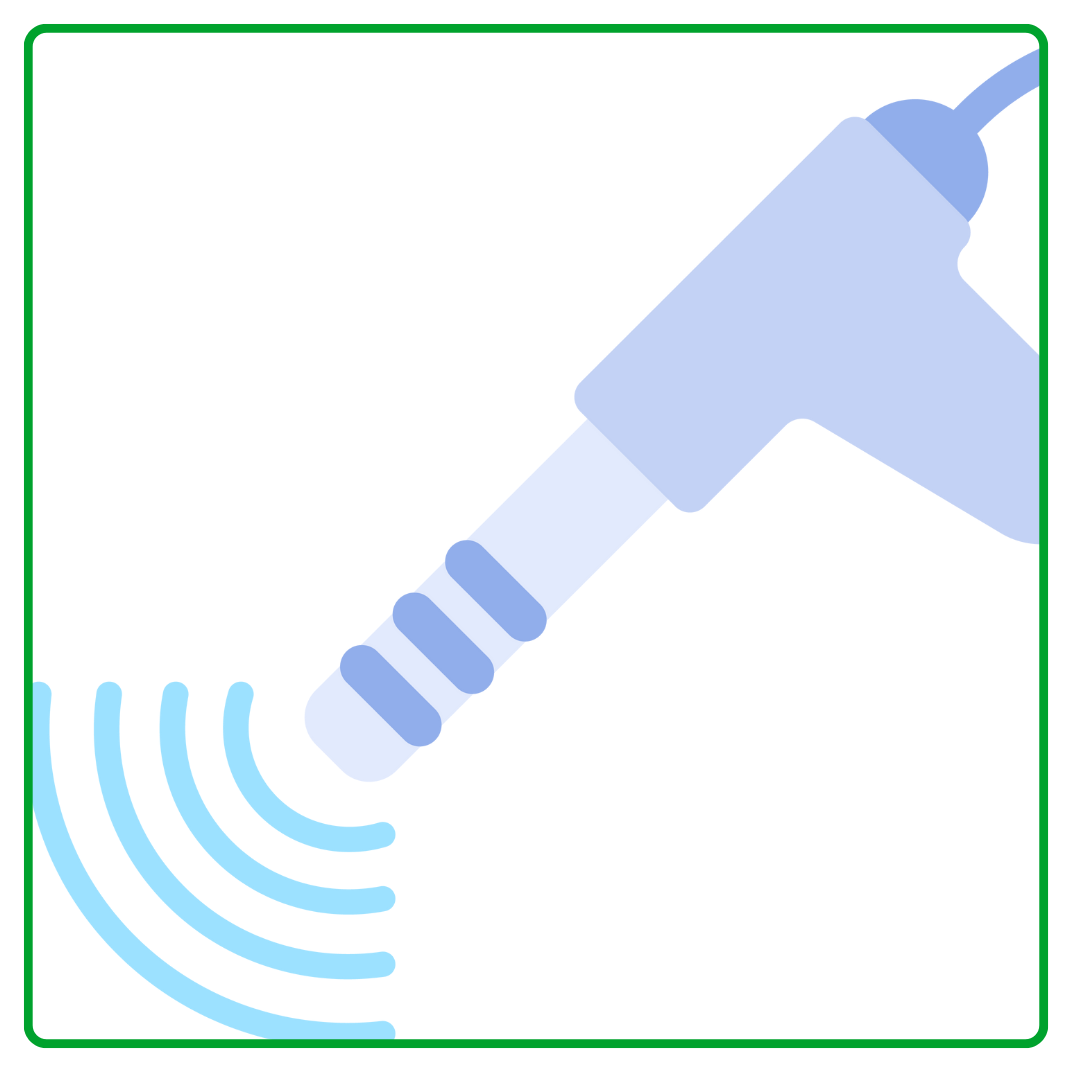
What is Shockwave Therapy?
Shockwave therapy is a non-invasive treatment that uses sound waves to stimulate the body’s natural healing processes. A specialized machine generates these sound waves, and a probe transmits the resulting pressure waves into specific tissues in the body. These waves activate biological mechanisms that reduce pain, regulate inflammation, and optimize the body’s ability to heal.
The type of shockwaves we use in our treatments are called Radial Pressure Waves. Other forms of shockwave therapy are widely used in medical treatments, such as breaking up kidney stones.
How does Shockwave Therapy work?
Shockwave therapy works by delivering pressure waves into the target tissue, creating a controlled micro-trauma. This triggers a healthy inflammatory response, which “reboots” the healing process—particularly in chronic conditions where healing has stalled.
Physiological Effects of Shockwave Therapy
Shockwave therapy has several key effects on the body:
- Pain Relief: Reduces the release of substance P, a chemical involved in pain transmission, leading to decreased pain signals in the nervous system.
- Increased Blood Flow: Stimulates the production of Nitric Oxide, which expands local blood vessels (vasodilation) and promotes healing.
- Formation of New Blood Vessels: Encourages neovascularization, the growth of new blood vessels, which is vital for tissue repair.

Common Conditions Treated with Shockwave Therapy
Shockwave therapy is particularly effective for chronic pain and inflammatory conditions where the healing process has stalled. It is also useful for relieving chronic muscle tension and breaking up fibrous tissue.
Common Conditions Include:
- Achilles tendinopathy
- Tennis elbow (lateral epicondylalgia)
- Plantar fascia pain (plantar fasciopathy)
- Rotator cuff pain and bursitis
- Chronic muscle pain and trigger points
- Frozen shoulder.

What to Expect During Treatment
During a shockwave therapy session:
- Your therapist will apply ultrasound gel to the target area to help transmit the pressure waves.
- A hand-held probe will deliver the pressure waves into the tissue.
- The therapist will adjust the frequency and intensity based on your feedback, the area being treated, and your pain tolerance.
- You may feel mild, deep discomfort during treatment, but it is generally very tolerable.
Duration:
Each session typically lasts 10-15 minutes, as 2-3 areas may be treated for optimal results.
Results:
Most patients notice improvements within a few days to a week after their first session. Some may even experience immediate relief. Because the effects are cumulative, a course of 3-5 sessions is usually recommended, depending on the condition and individual response.
Post-Treatment Advice
Shockwave therapy has minimal risks and side effects, but you may experience:
- Mild soreness or bruising in the treated area (resolves within 24-48 hours).
Important Tips:
- Avoid NSAIDs: Do not take anti-inflammatories (e.g., ibuprofen) after treatment, as they can reduce its effectiveness. If you take these regularly, discuss it with your physiotherapist.
- Rest: Avoid intense or high-impact exercise for 24 hours post-treatment to minimize inflammation.
- Follow Recommendations: Your physiotherapist will provide tailored exercises and activity guidelines based on your injury and recovery stage.
If you have any concerns following treatment, please contact your Physiotherapist.
Evidence and Research
As physiotherapists, we prioritize treatments backed by scientific evidence. Although shockwave therapy is relatively new for musculoskeletal injuries, research consistently supports its effectiveness.
Key Research Findings:
- Achilles Tendinopathy: Shockwave therapy combined with loading exercises improves outcomes (Mani-Babu et al., 2014).
- Tennis Elbow: Effectively reduces pain and improves grip strength, with better safety compared to other treatments (Yao et al., 2020).
- Plantar Fascia Pain: Safe and effective for cases unresponsive to 3 months of other treatments (Aqil et al., 2013).
- Frozen Shoulder: Improves pain, range of motion, and quality of life (Vahdatpour et al., 2014).
Final Notes
Shockwave therapy is a safe, evidence-based option for treating chronic pain and stalled healing processes. If you’re considering this treatment, speak with your physiotherapist to see if it’s right for you.